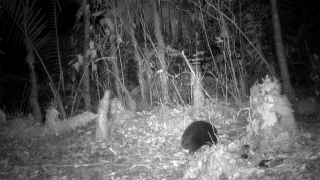
An expedition through an unpredictable, perilous mountain range in Indonesia’s province of Papua led to the rediscovery of a critically endangered egg-laying mammal that hasn’t been seen for more than 60 years.
For the researchers of Expedition Cyclops, Attenborough’s long-beaked echidna — a bizarre-looking, quill-covered creature with powerful digging feet — is a symbol of the biodiversity that can be rediscovered in Indonesia’s Cyclops Mountains.
See the video of the echidna here.
On a nine-week expedition, a 25-person crew battled malaria and earthquakes, and one student researcher even had a leech stuck in their eye for 33 hours.
Get DFW local news, weather forecasts and entertainment stories to your inbox. Sign up for NBC DFW newsletters.
“Climbing those mountains I like to think of as climbing a ladder whose rungs are made of rotting wood, with rails cladded in spikes and thorns, and a frame shrouded by sunken vines and falling rocks,” said team leader James Kempton of Oxford.
The less than 90-square-mile mountain range has been subject to illegal hunting for years. It’s the only habitat for Attenborough’s long-beaked echidna, which is considered critically endangered and is on the International Union for the Conservation of Nature’s Red List of Threatened Species.
Kempton’s team deployed over 30 camera traps to look for the echidna, suspecting it was around because of holes in the ground the animal uses to forage for worms. In the last images on the last SD card on the final day of the expedition, they finally found it.



